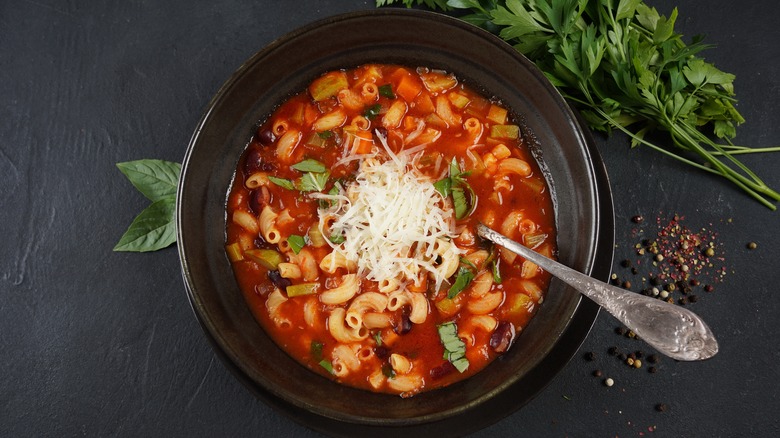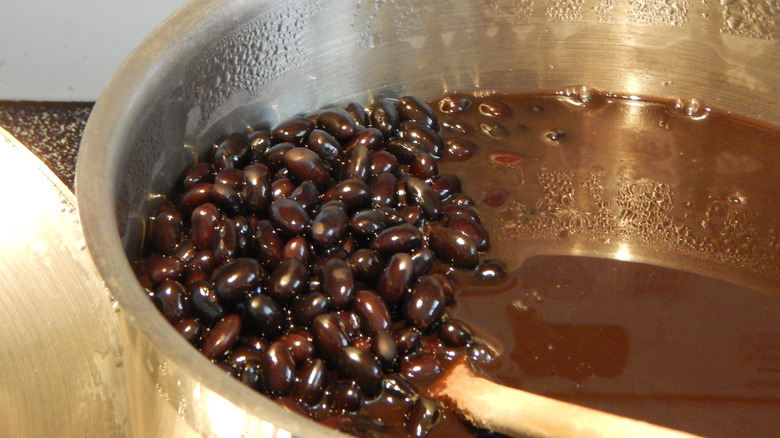Leftover Bean Broth Is The Rich Liquid You Should Use To Cook Pasta
Starchy water is often the underappreciated secret that's responsible for making pasta dishes great. It helps emulsify the ingredients in the sauce and pulls everything together to form a thick and luxurious coating for the noodles. The starch-infused liquid left behind after you've boiled the noodles is so important that if you accidentally toss that pasta water, you should whip up a substitute to add the finishing touches to your dish. Or, consider using bean broth.
Before you discard this tip, consider all the flavorful qualities that bean broth holds in its murky depths. It is infused with the bean's nutty flavor as well as notes from any other ingredients you may have added to the beans while they were cooking. Plus, it holds a good amount of starch, a quality that readily translates to creaminess in a pasta sauce. A well-made bean broth is not only good for boiling pasta, it can even become the base of the sauce. It's not an exaggeration to say that you can pull together a delicious Alfredo-like sauce that's lighter but still plenty creamy and flavorful using bean broth. You can even use leftover pasta, which can be stored without clumping, to quickly make it because when you have bean broth, you don't need additional pasta water.
Use bean broth to build a flavorful sauce
When you cook beans from scratch, it's important to soak them and then boil until tender. The water they are boiled in is seasoned with the flavors you wish to infuse in the beans, so when the legumes are finally ready you are left with a liquid that's already seasoned. Most importantly, it has a high level of useful starch. Aquafaba, the water used to cook chickpeas, is even used as a vegan egg substitute that can add fluffiness to dishes. All of these qualities mean bean broth is also a great choice for building pasta sauce.
For boiling, ensure there is enough salt in the broth to flavor the pasta. You can always dilute the broth before using it for a sauce, but unsalted pasta is no fun to eat. Also, make sure you don't add olive oil to the liquid you're boiling pasta in. However, feel free to add any other flavors you like — tomato paste is a good option for bold sauces. Once your pasta is boiled, take it out and save the broth.
Start with aromatics and optional vegetables in a pan, or even a simple mixture of butter, garlic, and grated Parmigiano cheese if you want to go the Alfredo route. Once you've constructed your sauce, add the boiled pasta, and cook until it thickens to the desired consistency. You can add more broth to thin out the sauce and balance the flavors. Make sure to stir and toss the pasta to emulsify the ingredients, then top with a final touch of grated cheese and pepper before serving.

